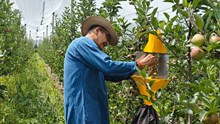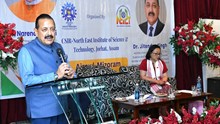
There is no doubt that agriculture in India is considered the backbone of the economy. In terms of GDP, agriculture contributes approximately 18.8% to the country's economy. Due to the economic crisis, the farming-as-a-service (FaaS) model is becoming increasingly popular among rural Indians. Farming-as-a-Service (FaaS) is a software that provides the ability to start, manage and monitor cloud computing resources. It can be used for managing virtual machines, containers, storage, and networking.
How does it work? FaaS is designed for the cloud. It is a virtual server, fully managed by a cloud provider. Farming-as-a-service is a platform for delivering food where the grower and consumer are linked. It offers a wide range of possibilities for sustainable farming in urban areas, such as vertical farming and hydroponics. Farmers can receive daily tasks in the form of orders, monitor their crops remotely through an app, and also take care of their crops with advice from specialists on the platform.
To address mutual benefits in the market, FaaS start-ups connect farmers with equipment owners. Through the use of FaaS, farmers can communicate with the marketplace through a wide range of business models, including farm-to-warehouse, farm-to-mill, and farm-to-fork. The fact that tech giants like IBM are investing substantially in this technology demonstrates its potential.
What solutions does Farming-as-a-service offer?
-
Farm management solutions:
Farmers can use farm management solutions to share information, analyze their data and make decisions relating to precision farming. It facilitates information exchange between farmers and market players which includes government, corporate entities, banking institutions, and advisory organizations sharing information. These solutions can include features such as crop planning, weather forecasting, irrigation scheduling, and pest management.
In most cases, these functions take place in three stages-
-
Data collection involves measuring seeds, fertilizers, soil quality, and weather conditions using high-tech equipment (drones, satellites)
-
The assimilated data can be used to train various stakeholders
-
Creation of mobile alerts and dashboards for data processing and information dissemination
-
Production assistance:
To ensure high levels of food production, it's important to be able to access necessary on-farm resources. Many organizations provide these resources and may help in tasks such as crop selection, developing markets, and maintaining organic standards. In addition to increasing accessibility and affordability, this involves renting equipment, hiring workers, and providing utilities. The question is, how?
The organization provides equipment rental services with or without expert operators, as well as on-demand skilled and unskilled workers, as well as utility services that are supplied off-grid with electricity and water. In agricultural services, organizations can provide either aggregation or provision, depending on the service delivery model. For example, a company may deliver agricultural services directly to farmers at their doorstep. In addition to offering a pay-per-use basis and leasing options, they may also offer EMI options depending on the farmer's repayment capability. As a result, farmers can increase their yields by enhancing their labor and capabilities.
-
Access to markets:
In the past, farmers have had limited access to markets. They either sold their produce to local traders or to export companies. Nowadays, thanks to new technologies, they can market their products worldwide via digital platforms and sell them directly to consumers.
They offer two ways of selling:
-
Input-farmer: A website or app that allows farmers to buy seeds, fertilizer, and pesticides at the right time online.
-
Farmers can sell directly to consumers using virtual platforms such as mobile apps or online stores, eliminating unnecessary middlemen.
Recently, several startups have emerged on the serverless platform, which has proven to be very successful. To ensure scalability, FaaS startups need to have upstream and downstream business models. Extending shelf life, providing fresher products, reducing losses, and minimizing logistics costs are all crucial components of ensuring scalability for them.
In the future, with the advent of software as a service, sustainable food production could see a revolution. We can create solutions to global food scarcity problems with the help of software. Farmers must be empowered to do this. It is possible to leverage the FaaS model by providing enterprises with an opportunity to serve as a platform where farm-level data and analytics can create value for the company.












Share your comments